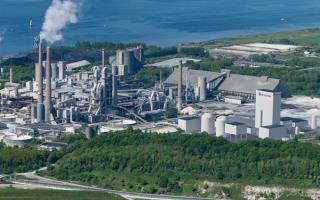When Lafarge Republic Inc decided to increase capacity of its Teresa and Norzagaray cement plants in the Philippines, it selected the FCB Horomill® to be installed at both plants. With one project now complete and the other due for commissioning at the end of this year, this article outlines the particular features that led to this choice of grinding solution, together with measures employed for smooth project integration into existing operations. By Fives FCB, France.
Several factors come into play when selecting the most suitable finish grinding solution for a cement plant. One important element is the option to produce cements with a higher cement-to-clinker ratio (C/K), both in terms of increasing production in a sold-out market, and reducing production cost per tonne. This can be done through the reduction of clinker and maximising the use of cheaper, readily-available additives such as pozzolan, limestone and fly ash. This solution implies a combined drying/grinding arrangement, as most of the above additives have a relatively high water content. In addition, market demand and plant production constraints often require a switch in production. Therefore, extensive process knowledge, including the optimisation of a plant’s heat balance, is a key asset.
Another important factor is energy consumption, both in terms of capex (eg, plant grid adaptation) and opex (eg power costs).
Recent grinding expansion projects undertaken by Lafarge Republic Inc in the Philippines are good examples of where such considerations have been taken into account. The country’s leading cement producer contracted Fives FCB of France with new cement grinding plants for its Teresa plant located in Rizal province, with another order placed shortly afterwards for the Norzagaray works in Bulacan province.
